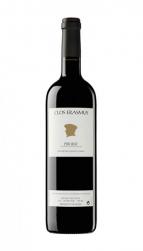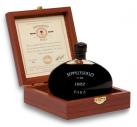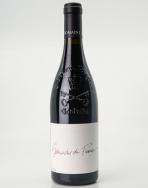Wine Advocate: 99 Points
I retasted the 2021 Clos Erasmus to compare it with the 2022 and 2023. The three vintages are very different. This 2021 has an ethereal character and comes through as a cool-climate wine; it doesn't have the same weight as the 2022 or 2023 but it has something intriguing and very attractive with a magnetic attraction. It's a little shy when recently opened but it's floral and aromatic. "It's usually orange blossom" Daphne Glorian told me "but today I find it more austere and not as aromatic a little more backward." I don't dislike restraint which to me is a sign of wines that are going to age well in bottle. It opened up slowly to notes of saffron aromatic herbs a little balsamic with medicinal notes and also something earthy with hints of black truffles. When I tasted this wine it was a stormy day with low pressure which to me make the wines earthier. Violets came with time and some dry roses but there were more violets than white flowers this time. It's interesting to check the evolution and provide a follow up for a wine that feels like it is aging very slowly with a beautiful dark ruby color. And it's going to continue like this... Daphne Glorian was quite happy with her 2022s after the 2021 which had the snowstorm and the drought that started in the winter of 2021/2022 but the vines had enough water and behaved quite well. It was a lot worse with the effect of the accumulated lack of rain in 2023 and it didn't rain until November 2024. There's 30% less volume in 2023 but in 2022 they got more normal yields 3200 bottles of Erasmus and 23000 of Laurel though the Manyetes vines and the new plantings of young vines are still giving low yields. Daphne feels the wines are balanced with no edges. I found them to be very elegant and polished sleek without the nerve of the 2021s. For her the 2022s are closer to the 2020s. It's a very drinkable vintage. I also had a sample of the 2023. Published: May 01 2025 The 2021 Clos Erasmus is not a shy wine and comes in at 15% alcohol but with a pH of 3.3. The search here is for balance as power comes as a given in Priorat. It was produced with 70% Garnacha and 30% Syrah mostly from 40-year-old vines except for a small plot of around 85-year-old vines. The vineyards are certified organic and they've practiced biodynamics since 2004 but never got certification. The vinification is simple and the same as for Laurel: the bunches cooled down for 24 hours before being sorted and destemmed then the grapes were put into the vat where they warm up and start fermenting with the indigenous yeasts. It was pressed and put in barrels 40% of them new where it underwent malolactic and aged for 18 months. It feels like the most elegant and ethereal Erasmus ever despite the 15% alcohol on the label. It's very young and feels a bit shy slightly developing notes of Mediterranean herbs wild berries and flowers and is a little closed but very harmonious and insinuating. It's medium to full-bodied with very fine and elegant but abundant tannins. It does feel lighter than previous vintages possibly the effect of the cooler year. 3400 bottles produced. It was bottled in May 2023. The beautiful vineyard of Solanes?4.7 hectares located in El Lloar and planted in the Natural Park under the cliffs of the Serra de Sant Pau?is coming into production. With that Daphne Glorian has close to 26 hectares mostly in Gratallops and she bought a large vineyard in Manyetes from René Barbier. She's made a white from three hectares there but they still don't know what they are going to do with the red grapes?they might contribute to the Laurel red or be bottled separately. She was very happy about 2021 about which she told me that "after 2019 and 2020 which were pretty much in line with what we expect in the Priorat in terms of climate generally warm and dry 2021 was a complete outlier. Sixty centimeters of snow in January followed by regular rains during the growing season make it a 'cold-climate' wine. The wines are delicate flowery with strong acidity and tremendous aging potential. We also got volumes we had not seen since 1997 around 23-24 hectoliters per hectare thanks to good conditions at the time of flowering."
Customers Viewing This Page Might Also Like These Items
Sale Price: $125.00
Save $20.00 (14%)












